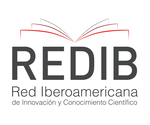Pruebas diagnósticas en alergia y su utilidad clínica.
DOI:
https://doi.org/10.20453/rmh.v15i2.798Resumen
The prevalence of allergic diseases in Peru as well as in the rest of the world is increasing every year, independently of any integral treatment and control measures instituted in the last few years. Consequently, direct and indirect costs in the public or private health systems are highly expensive and generate a global concern related with the search for prevention and early diagnosis, which will permit specific actions that minimize disabling states due to this reason. A detailed clinical history is the key to the proper identification and/or dismissal of the probable allergenic agents that will trigger many of the allergic states, as well as indicating the auxiliary diagnostic tests to be chosen. For the different allergic diseases, various methods exist that can be used to help in diagnosis with proven specificity and sensibility, considering the different allergenic agents. Precise identification of such agents permits the introduction of secondary and tertiary prevention methods, which have as primordial purpose to avoid symptoms and exacerbations, preventing disabling states and improving patient life quality.
Descargas
Descargas
Publicado
Cómo citar
Número
Sección
Licencia
Los autores ceden sus derechos a la RMH para que esta divulgue el artículo a través de los medios que disponga. Los autores mantienen el derecho a compartir, copiar, distribuir, ejecutar y comunicar públicamente su artículo, o parte de él, mencionando la publicación original en la revista.

















